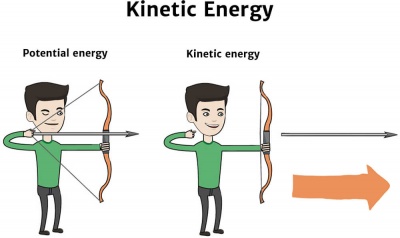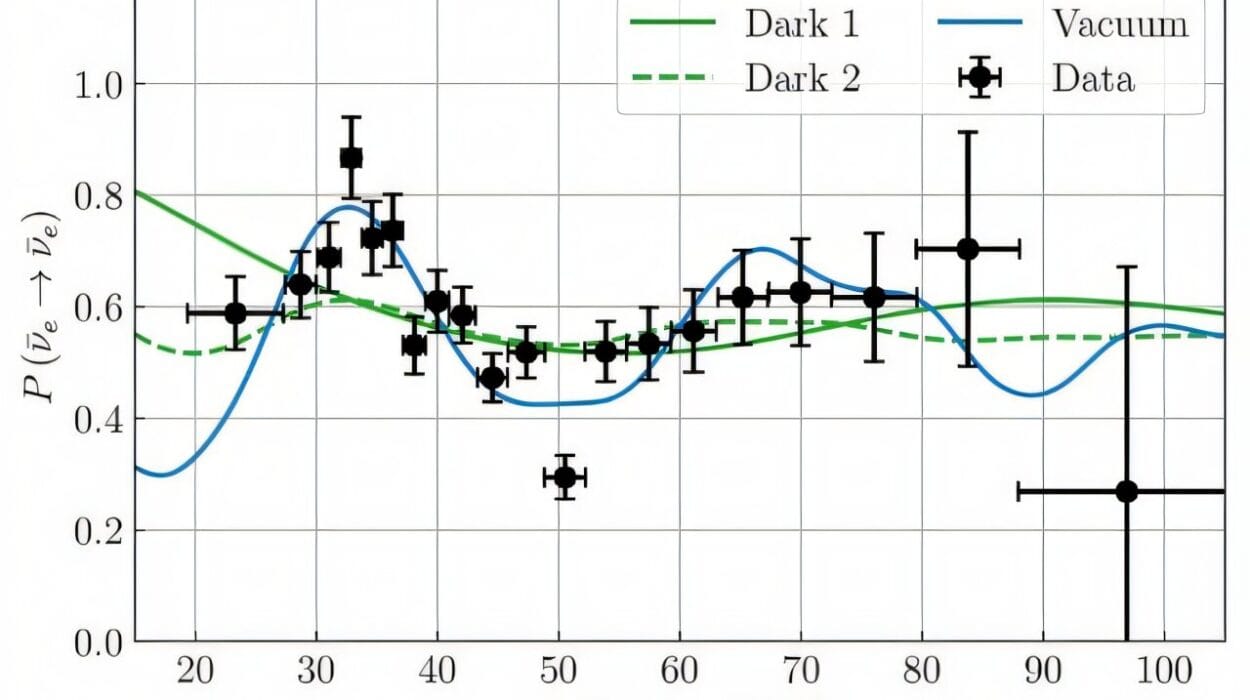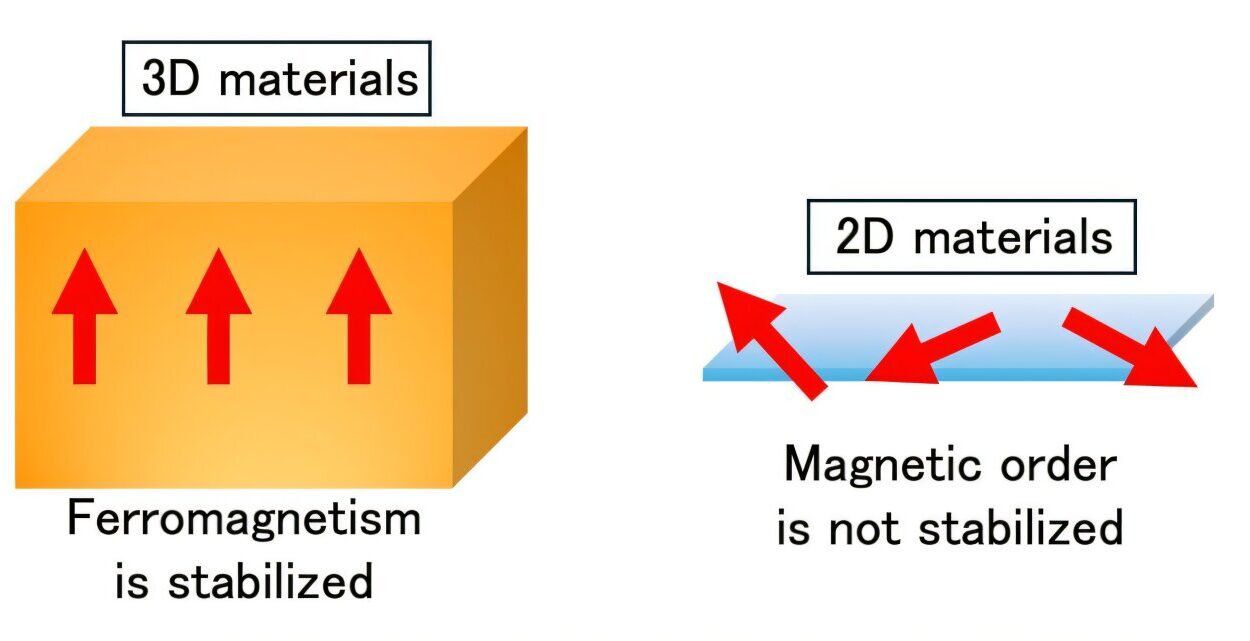Every time you toss a baseball, ride a bike, or watch a leaf flutter in the wind, you’re witnessing kinetic energy in action. It’s the energy that keeps the world moving—literally. Kinetic energy is the reason bullets pierce armor, waves crash onto shorelines, and planets remain locked in their celestial dance around the sun. It is energy in its most active, dynamic form: the energy of motion.
We often talk about energy as a kind of mystical force, something that’s always present but rarely understood. But kinetic energy is no enigma; it’s a cornerstone of classical mechanics and modern physics alike. Whether you’re dropping an apple or watching a jet zoom across the sky, you’re seeing kinetic energy at play. It’s not just a term from science class—it’s the vital currency of motion that governs every moment in the universe.
In this article, we’ll delve deep into kinetic energy, unpacking its mathematical beauty, its real-world relevance, and the fundamental laws that keep it in check. Along the way, we’ll explore how it connects to potential energy, how it scales with mass and speed, and how it drives everything from Olympic sprinters to nuclear explosions. So buckle up: the world of kinetic energy is in motion, and you’re about to move with it.
Defining Kinetic Energy: More Than Just Movement
At its core, kinetic energy is defined as the energy an object possesses due to its motion. If something is moving, it has kinetic energy. If it’s standing still, it does not—at least not in the kinetic sense.
The mathematical definition of kinetic energy in classical mechanics is:
KE = ½mv²
Where:
- KE is kinetic energy
- m is the mass of the object
- v is its velocity (speed in a given direction)
This deceptively simple formula carries profound implications. The kinetic energy of an object scales linearly with its mass, but exponentially with its velocity. That means doubling the speed of an object quadruples its kinetic energy. A speeding car at 60 mph doesn’t just hit twice as hard as one at 30 mph—it hits four times as hard.
This exponential relationship is crucial in everything from traffic safety to ballistic physics. It tells us why a fast pitch in baseball can be devastating, and why space probes require tremendous fuel to accelerate through the vacuum of space. Kinetic energy isn’t just motion—it’s the measure of motion’s power.
The Historical Origins: From Aristotle to Newton and Beyond
The concept of motion and its relation to energy stretches back to ancient philosophers like Aristotle, who believed that a force was necessary to maintain motion. This idea dominated for centuries until Galileo Galilei and Isaac Newton revolutionized our understanding.
Galileo observed that objects in motion tend to stay in motion unless acted upon by an external force, laying the groundwork for the concept of inertia. Newton formalized this into his first law of motion. He also developed the second law—F = ma—which connects force, mass, and acceleration, all of which play into kinetic energy.
But it wasn’t until the 18th century that kinetic energy took on its modern form. The term “kinetic energy” itself comes from the Greek word “kinesis,” meaning movement. Scientists like Gottfried Leibniz began formulating ideas about “vis viva,” or living force, which eventually evolved into our modern conception of kinetic energy.
In the 19th century, James Prescott Joule and others helped formalize the relationship between kinetic energy and other forms of energy, laying the groundwork for the law of conservation of energy. From these intellectual roots, kinetic energy emerged not just as a mechanical curiosity, but as a pillar of physics.
Translational vs. Rotational Kinetic Energy
Most of us are familiar with the idea of a car driving down the road—that’s translational kinetic energy, where an object moves in a straight line or along a curved path. But there’s another form: rotational kinetic energy. This occurs when an object spins around an axis, like a planet rotating, a wheel turning, or a figure skater twirling.
The formula for rotational kinetic energy is similar in form:
KE_rotational = ½Iω²
Where:
- I is the moment of inertia (analogous to mass, but for rotation)
- ω is the angular velocity
Together, translational and rotational kinetic energy describe virtually all motion we observe. A rolling soccer ball, for example, has both: it moves forward (translational) and spins (rotational). Engineers, physicists, and athletes all rely on understanding these dual forms to optimize motion—whether designing efficient engines or perfecting a tennis serve.
From Macroscopic to Microscopic: Kinetic Energy at All Scales
Kinetic energy doesn’t just belong to visible objects like cars and cannonballs. It operates at every scale of existence—from galaxies to gas molecules. At the atomic and molecular level, kinetic energy is intimately tied to temperature. In fact, the temperature of a substance is a direct measure of the average kinetic energy of its particles.
In a solid, atoms vibrate around fixed positions. In liquids and gases, they move more freely, colliding and bouncing around with higher kinetic energies. This is why heating a pot of water makes it boil: energy is being transferred into the water, increasing the kinetic energy of its molecules until they escape as steam.
This microscopic kinetic energy is the basis of thermodynamics, the science of heat and energy transfer. It explains why gases expand when heated, why pressure increases with temperature, and why engines require fuel to move pistons. Kinetic energy is not only visible—it’s the heartbeat of matter itself.
The Energy Conversion Dance: Kinetic and Potential Energy
Kinetic energy rarely works alone. It is part of a dynamic partnership with potential energy—the stored energy of position or configuration. When a roller coaster climbs a hill, it builds potential energy. At the peak, this potential energy begins to convert into kinetic energy as the coaster descends, accelerating with gravity’s pull.
This exchange is governed by the principle of energy conservation: energy cannot be created or destroyed, only transformed from one form to another. Kinetic energy may turn into potential energy and back again, but the total amount of energy remains constant (neglecting losses like friction or heat).
This interplay is everywhere: in pendulums swinging, springs compressing and releasing, water flowing from a dam, or athletes leaping into the air. It’s why ski jumpers speed down ramps, converting stored gravitational potential into the soaring kinetic energy of flight.
Real-World Applications: Why Kinetic Energy Matters
Kinetic energy isn’t just an academic concept—it’s critical to everyday life and modern technology. In the world of transportation, kinetic energy plays a central role. Cars, planes, and trains all convert chemical potential energy (fuel) into kinetic energy to move. And when they need to stop, that kinetic energy must be absorbed or redirected—often through friction in brakes, which converts it into heat.
Regenerative braking in electric and hybrid cars recaptures some of this kinetic energy, converting it back into electrical energy to recharge batteries. This not only increases efficiency but also illustrates the elegant reversibility of energy forms.
In sports, kinetic energy is the key to performance. A soccer ball’s speed, a sprinter’s burst, a hammer throw—all are studies in kinetic energy. Athletes and coaches analyze biomechanics to maximize how energy is generated, transferred, and applied, often down to the millisecond.
Even in disasters, kinetic energy is a central player. Consider a meteor slamming into Earth: its mass and velocity give it kinetic energy that can vaporize rock, create craters, and alter climates. Or think of tsunamis, where vast amounts of kinetic energy are transferred from seismic shifts to massive waves that race across oceans.
Understanding kinetic energy isn’t optional—it’s essential for building, protecting, moving, and living.
Kinetic Energy in Modern Physics: Relativity and Quantum Views
While the classical formula for kinetic energy works well at everyday speeds, things change dramatically at speeds approaching the speed of light. Enter Einstein’s theory of relativity, which modifies the kinetic energy equation to account for the increasing mass and time dilation at high velocities.
In relativistic mechanics, kinetic energy is derived from the total energy minus the rest energy:
KE_relativistic = (γ – 1)mc²
Where:
- γ (gamma) is the Lorentz factor, defined as 1 / √(1 – v²/c²)
- c is the speed of light
This equation shows that as an object approaches the speed of light, its kinetic energy approaches infinity. That’s why no object with mass can reach or exceed light speed: it would require infinite energy.
In the quantum realm, kinetic energy appears in strange and probabilistic ways. Electrons in atoms possess quantized kinetic energy levels, confined by their wave-like nature. The uncertainty principle ensures that particles can never be completely still, implying that kinetic energy, even at a quantum level, is never truly zero. This gives rise to phenomena like zero-point energy and quantum tunneling—effects that classical physics cannot explain.
In short, kinetic energy is not just part of Newton’s legacy—it’s deeply woven into the tapestry of modern physics.
Harnessing Kinetic Energy: The Future of Motion
As the world seeks sustainable energy solutions, kinetic energy offers exciting possibilities. Wind turbines harness the kinetic energy of moving air. Hydropower stations tap the kinetic energy of rivers and tides. Even footstep-powered tiles and kinetic chargers are being explored to power electronics through motion.
Emerging technologies also aim to store kinetic energy efficiently. Flywheel energy storage systems use spinning masses to hold kinetic energy that can be tapped instantly when needed, with applications in electric grids and transportation.
On the futuristic edge, scientists and engineers dream of harnessing kinetic energy from space debris, human motion, or even microscopic vibrations. The goal: to convert movement into power, seamlessly and sustainably.
Kinetic energy may be ancient in concept, but its applications are as modern as tomorrow’s inventions.
The Philosophy of Motion: More Than a Number
Beyond equations and engineering, kinetic energy evokes a deeper sense of awe. It reminds us that movement is intrinsic to existence. From the swirl of galaxies to the dance of atoms, motion pervades the cosmos. And wherever there is motion, there is energy.
Philosophers and physicists alike have pondered whether motion is more than mere mechanics. Is it a fundamental property of the universe? Is the kinetic energy of a particle a reflection of deeper spacetime dynamics? Can motion exist without a frame of reference? These questions push us beyond the pragmatic into the poetic.
Kinetic energy connects us to the rhythm of the universe. Every footstep, heartbeat, and breath is a kinetic miracle. Every vehicle, waterfall, and explosion is an unfolding of nature’s dynamic tapestry. It’s not just about speed or force—it’s about the flow of life through time and space.
Final Thoughts: The Pulse of the Universe
Kinetic energy is everywhere, shaping our world in ways seen and unseen. It empowers movement, drives machines, and sustains life. From Newton’s first ball rolling down a slope to the dance of quarks in quantum fields, kinetic energy is the lifeblood of motion.
We’ve explored how it’s defined, how it’s measured, and how it manifests across the cosmos. We’ve seen it at work in sports, technology, nature, and nuclear physics. And we’ve glimpsed the philosophical questions it raises about the nature of movement itself.
In the end, kinetic energy is not just a term in physics—it’s the very essence of action. It’s what happens when mass meets velocity. It’s what lets the universe move, evolve, and transform.
The next time you feel the wind on your face, drive a car, or drop a ball, remember: you’re not just moving—you’re channeling one of the most fundamental forces of nature. That’s kinetic energy. And it’s in motion, just like everything else.






